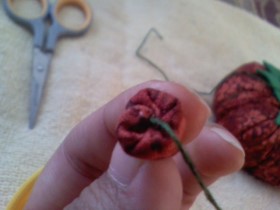
What you need
Various Ingredients Shown Below
Instructions
Clay masks withdraw excess oil and pollutants from our faces.
Even if it’s very cold where you live and your skin is chapped and dry, a soothing clay mask will be beneficial, especially if you mix the clay with a moisturizing vegetable oil base.
Making clay masks is easy. Finding the clay is another matter. Many health food/whole food stores do stock various types of clay. First, you’ll need to know about what the different types of clay contain and the sort you need for your skin type.
Kaolin, white: Also known as china clay as it was discovered on Mount Kaolin and later brought to Europe in the 18th century. Most kaolin is mined in North and South Carolina, Georgia, England and Australia.
Finely grained kaolin is also used in top quality porcelain, bone china and as a bonding agent in making paper. Premium white china clay is low in contaminants and iron. This clay is able to balance the skin’s sebum activity. For those unfamiliar with clay masks, this is the one that’s recommended the most. White kaolin is also suitable for children and adults with sensitive skin.
Kaolin, pink: Pink kaolin combines red and white clay and is versatile enough for those with combination, normal or oily complexions.
French clay, green: Heavy with volcanic matter, decomposed plant substances and minerals. Very cleansing. Only recommended for oily skins or a normal/oily skin combination.
Moroccan clay, red: Contains iron and is used by those who have an oily complexion. Men with tough skin might want to give this a try.
Bentonite: This clay is found primarily in the Western United States.
However, there is an Indian bentonite that is darker in color due to its high iron content. Found in the semi-arid Kutch region of India, it is formed mainly of volcanic ash. Bentonite is a main ingredient in cat litter — a great example of the substance’s ability to absorb impurities/waste matter! High-grade bentonite is safe for use on all skin types.
Fuller’s earth: This is a very fine grayish colored powder derived from algae that is chock full of minerals and is super absorbing. Normal and oily skin types benefit from this earthy substance.
Skin Types:
To combine the clay you’ll need various types of liquids, depending upon your skin type. Here’s a general guide:
Dry/Sensitive Skin: Heavy cream, honey or vegetable oils such as sesame, grapeseed, sweet almond, jojoba or olive.
Normal Skin: A light vegetable oil such as grapeseed or sweet almond. Whole milk is recommended, as are flower waters such as rose or orange. Only use one liquid at a time!
Oily Skin: Distilled or spring water, witch hazel, flower waters.
Before you make your clay mask, clean your face thoroughly as this will allow the clay to really do its job much more effectively. Some experts recommend steaming/massaging your face before applying the clay mask.
Mixing Ingredients:
In a glass bowl, blend 2 tablespoons of the clay with approximately 3 tablespoons of the liquid.
Pour the liquid in slowly so you don’t add too much. The consistency should be thick, not runny.
If you add more of the wet ingredient than you want, just increase the amount of clay.
Applying the Mask:
You can spread the mask with your fingers, or a cotton swab. Avoid the eye area and use upward strokes. Apply to the neck also. Spend anywhere from 15-30 minutes relaxing, preferably lying down. Don’t fall asleep! When the mask is dry, rinse off with lukewarm or cool water. Your skin will glow with vibrant good health.
Adding Essential Oils:
A drop or two of a pure essential oil such as ylang ylang, rose, lavender or orange will be helpful for your face and will further calm you.
Gift Ideas:
Don’t know what to give someone for Christmas or an upcoming birthday/special occasion? Find a pretty colored glass jar with an airtight lid and add the type of clay you think would be good for their skin type. Make sure you label it and add instructions.
This Home Made Recipe was contributed by Lisa Maliga

















What preservative should I be using
nice recipes but would like to know more about what preservative to use if you are making a jar and giving it to someone as a gift.